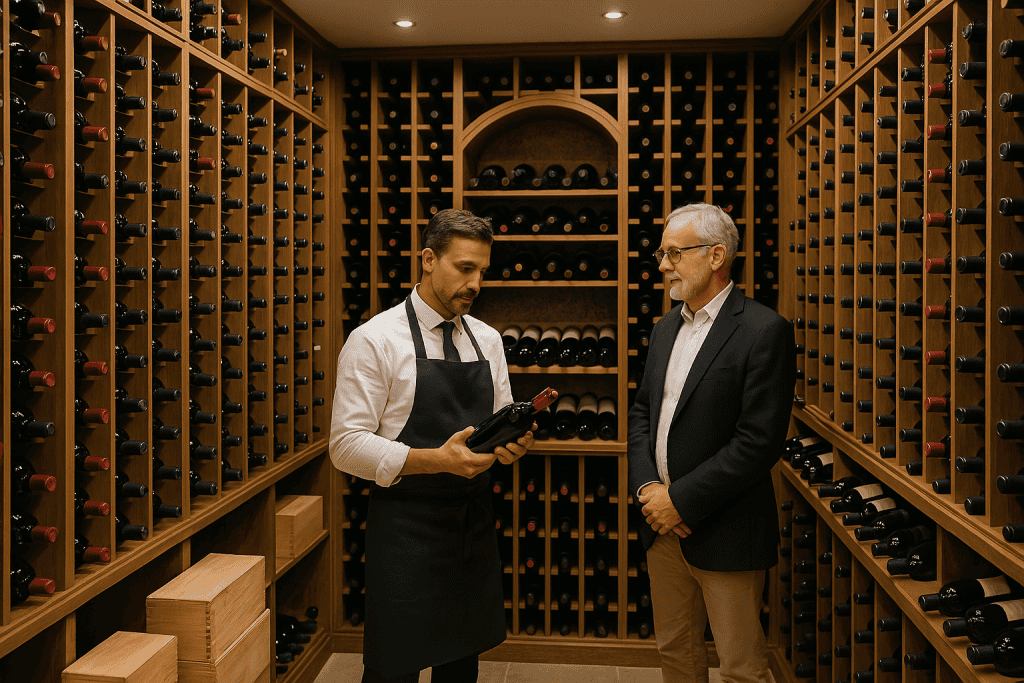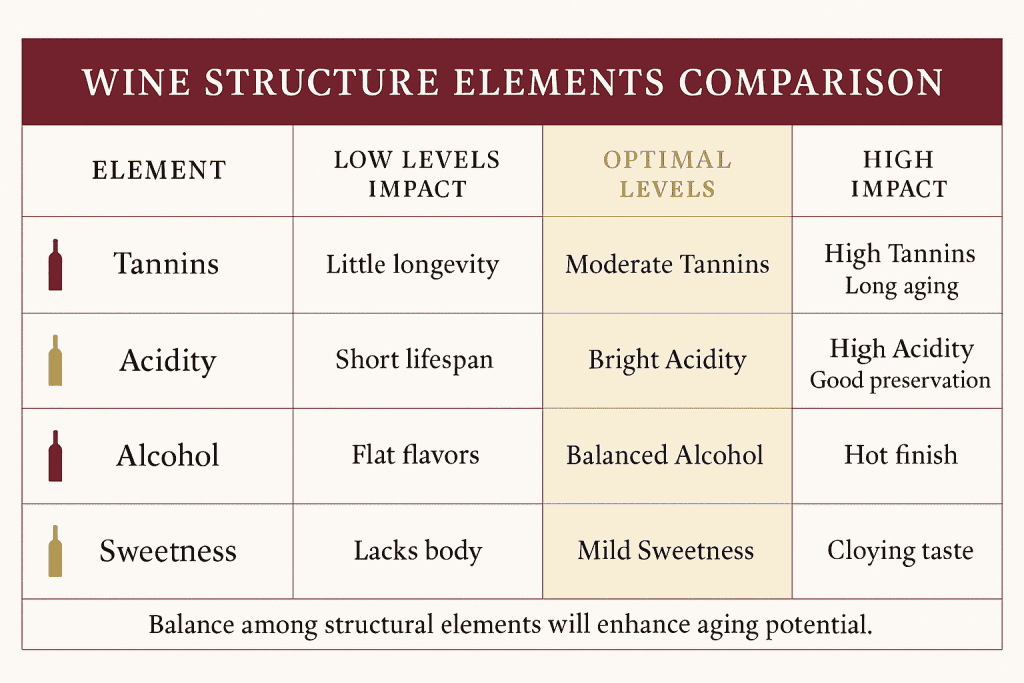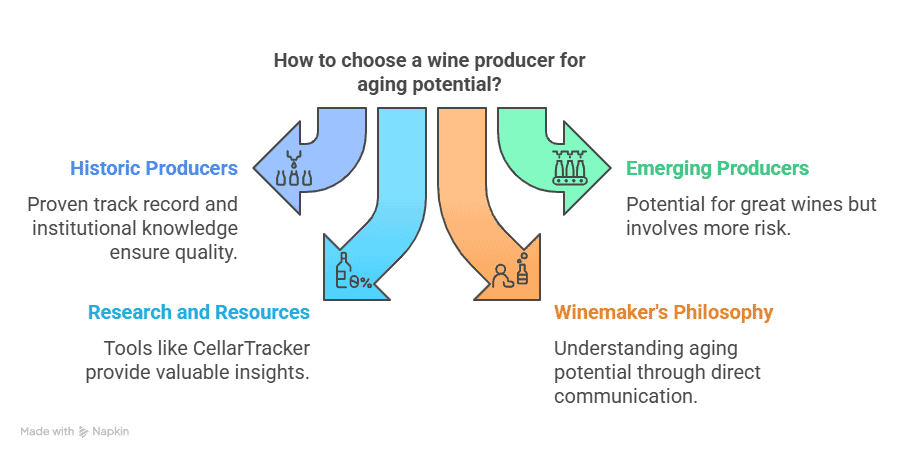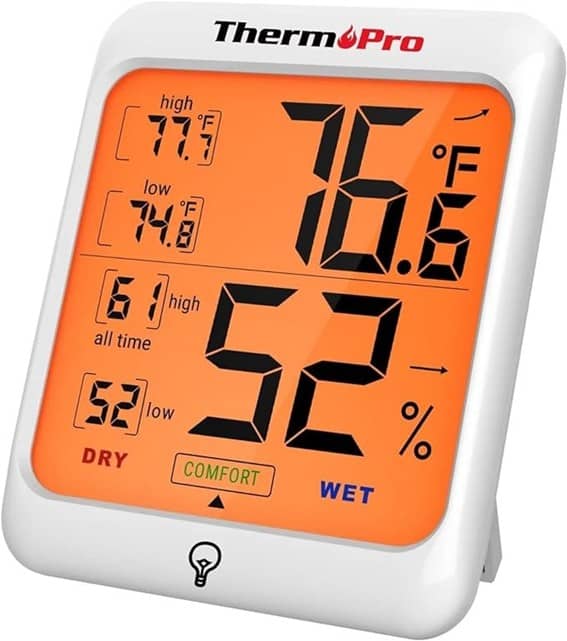Have you ever wondered why some wines get better with age while others should be enjoyed young? The art of determining a wine’s aging potential is both fascinating and practical for any wine enthusiast!
According to a recent study by Wine Spectator, only about 10% of wines produced worldwide are actually meant for long-term aging. I’ve spent years learning the subtle cues that indicate whether a bottle will transform beautifully over time or deteriorate past its prime.
In this comprehensive guide, we’ll explore the key indicators of wine aging potential and help you make informed decisions about which bottles to cellar and which to enjoy now.
Welcome to Didi Somm and Cheers!
Important Notice: The information in this article is for general and public information purposes only. It solely reflects Didi Somm’s or his Staff’s opinion, and no responsibility can be assumed for errors or omissions in the service’s contents. For details, please check the Disclaimer at the bottom of the homepage.

Key Takeaways
- High-quality wines with balanced tannins, acidity, and alcohol content generally have better aging potential
- Red wines typically age longer than whites, with some exceptional varieties capable of aging for decades
- The producer’s reputation and vintage year significantly impact aging capability
- Proper storage conditions are essential for successful wine aging
- Wine chemistry (tannins, acidity, alcohol, sugar content) determines structural longevity
- Learning to identify aging indicators saves money and enhances your wine experience
The Science Behind Wine Aging
I’ll never forget the first time I witnessed the magic of an aged wine transforming before my eyes. It was a 1998 Barolo I’d been saving for nearly a decade, and let me tell you, the difference between that first sip and what I remembered from buying it was like night and day! What once was harsh and tannic had mellowed into something absolutely sublime.
The science behind this transformation is fascinating stuff. When wines age, they undergo complex chemical reactions that significantly alter their flavor profile. Tannins – those compounds that make your mouth feel dry and puckery – actually polymerize and become softer over time. I learned this the hard way after opening a Cabernet way too young and nearly getting my mouth stuck together from the astringency!
Oxygen plays a crucial role, too, though it’s a double-edged sword. A tiny bit of oxygen exposure through the cork creates those gorgeous tertiary aromas like leather and earth, but too much will turn your prized bottle into expensive vinegar. I’ve experienced both outcomes, and trust me, the latter is heartbreaking.
There’s a huge difference between bottle aging and barrel aging that not many folks understand. Barrel aging happens at the winery and introduces those vanilla and spice notes from the wood. Bottle aging is what happens in your cellar after purchase, where those primary fruit flavors gradually evolve into secondary and tertiary notes. Some of my most satisfying wine moments have been tasting the before-and-after of this evolution.
Each wine style has its own maturation curve, too. Big tannic reds like Cabernet Sauvignon and Nebbiolo can improve for decades, while delicate whites might peak in just 3-5 years. I’ve got a chart on my cellar wall that maps out the optimal drinking windows for different varieties—something I wish I’d had years ago before I drank some bottles too early and left others too late!
The sweet spot for most wines lies at the peak of their maturation curve, where fruit character remains vibrant while complexity has fully developed. Finding this perfect moment is what makes the patience of aging so rewarding.
Key Factors That Determine Aging Potential
After 15+ years of collecting wine, I’ve learned some hard lessons about determining aging potential—often by wasting money on bottles that were never meant to evolve! Not all wines improve with age, and knowing which ones will is both an art and a science.
The grape variety is absolutely your first clue. Some varieties are practically built for the long haul. I’ve got Cabernet Sauvignons from the early 2000s that are still evolving beautifully, while Nebbiolo-based Barolos need at least a decade before they even begin to show their true character. Riesling is my secret weapon for aging white wines – I’ve tasted 30-year-old German Rieslings that were mind-blowingly fresh!
On the flip side, I’ve made the rookie mistake of trying to age wines like Beaujolais Nouveau or Pinot Grigio, which are generally meant to be enjoyed young and fresh. Not my finest moment as a collector! Most mainstream Merlots and Chardonnays fall somewhere in the middle, with good examples developing nicely over 5-8 years.
The wine’s structure is possibly the biggest predictor of ageability. I remember a tasting with a winemaker who described tannins as the “skeleton” that holds a wine together over time. High-quality tannins feel silky rather than bitter, and they’re essential for red wine longevity. I now run my tongue along the roof of my mouth after tasting to assess tannin quality – a little trick I picked up from a Master Sommelier.

Acidity is another crucial element. It’s like the wine’s preservative—the higher the acidity, the longer the aging potential. This explains why I’ve had 20-year-old Champagnes that taste incredibly vibrant!
The alcohol content matters, too; wines with moderate alcohol (12-14%) generally age more gracefully than high-alcohol bombs.
Balance is ultimately the key. I’ve seen wines with massive tannins fall apart because they lacked enough fruit concentration to support them through aging. A well-balanced young wine where no single component dominates is your best bet for successful aging. When all elements work in harmony, the wine has the structural foundation needed for a beautiful evolution.

How to Assess a Young Wine’s Aging Potential
I used to think you needed decades of experience to spot aging potential in young wines, but after countless tastings (and yes, a few embarrassing misses), I’ve developed a pretty reliable assessment system. You can, too!
Visual clues are where I always start. Hold that glass up to the light and check the color intensity. Deep, concentrated colors in red wines often indicate good aging potential. I once dismissed a pale Pinot Noir that a winemaker friend insisted would age beautifully—boy, was I wrong! Six years later, it had developed this gorgeous complexity that made me eat my words.
With white wines, a slightly deeper golden color (not too yellow!) might suggest good aging potential. Don’t be fooled by clarity though—some unfiltered wines look cloudy young but age magnificently. I’ve learned that sediment in young red wine usually indicates minimal filtration, which is actually a good sign for aging!

The taste assessment is where the rubber meets the road. Concentration is key—does the flavor persist long after you’ve swallowed? My rule of thumb: If I can still taste the wine after counting to 20, it’s probably got good aging potential. I call this the “persistence test,” and it hasn’t steered me wrong yet.
Balance becomes crucial here, too. Are the tannins, acidity, fruit, and alcohol in harmony, or does one element stick out awkwardly? The most age-worthy wines I’ve encountered have exceptional balance even when young, though they might be somewhat closed or tight initially.
Primary flavors (fresh fruits) will evolve into secondary (dried fruits, spices) and tertiary flavors (leather, earth, nuts) over time. When assessing young wine, I look for hints of complexity beyond just primary fruit—these are usually good indicators of aging potential.
Professional resources have saved me tons of money and disappointment. I religiously check critic scores and drinking windows before buying age-worthy wines. Wine Advocate’s drinking windows are particularly reliable – I’ve built a pretty impressive collection by following their recommendations.
My Tip: Don’t be shy about developing relationships with knowledgeable wine merchants, either. My local wine shop owner has steered me toward some incredible aging values I would have otherwise missed!
Producer Reputation and Track Record
Let me tell you something I wish someone had told me when I first got serious about wine collecting: the producer matters just as much as—if not more than—the grape variety or region! I learned this lesson after dropping serious cash on a “great vintage” from a mediocre producer, only to find it hadn’t improved one bit after five years.
Historic wineries with proven track records are often your safest bet for age-worthy wines. Houses like Château Latour in Bordeaux or Giuseppe Mascarello in Barolo have been producing age-worthy wines for generations. Their institutional knowledge about making wines built for the long haul is unmatched. I’ve got bottles from producers with 100+ year histories that have never disappointed.
Researching a producer’s track record has become my obsession before making any serious purchase. CellarTracker has been my go-to resource – I can see how a producer’s wines from 10 or 20 years ago are drinking today. This kind of research has saved me from many expensive mistakes!
A winemaker’s philosophy significantly impacts aging potential, too. Some winemakers explicitly craft their wines for immediate enjoyment, while others deliberately make wines that need time to show their best. I once had the chance to talk with a prominent Napa winemaker who told me flat out that his wines weren’t meant to age beyond 5-7 years. I appreciated his honesty!
Emerging producers can create amazing age-worthy wines, too, though it’s a bit more of a gamble. I’ve found that winemakers who have trained under established masters often bring that aging-focused approach to their own projects. Some of my best aging discoveries have come from following winemakers as they branch out on their own.
The relationship between price and aging potential isn’t always straightforward. While most truly age-worthy wines aren’t cheap, not all expensive wines age well. I’ve had $30 Riojas that developed beautifully over 15 years while $100+ cult Napa Cabs faded after just 5. Traditional producers often offer better-aging value than flashy cult wineries, something I wish I’d understood before dropping a small fortune on some trendy labels that peaked way too early!

Practical Tips for Building an Age-Worthy Collection
Building my wine collection has been a 15-year journey of triumphs and face-palm moments. I hope you can learn from my mistakes instead of making your own! Creating an age-worthy collection doesn’t require a mansion or a trust fund – just some practical knowledge and planning.
Budget considerations come first because, let’s face it, we can’t all stock up on First Growth Bordeaux. I’ve found that certain regions offer phenomenal aging value – think Rioja Gran Reservas, Barbera d’Alba, or Vouvray. These wines can age beautifully for 10-20 years but often cost a fraction of more famous regions. My best aging bargain ever was a $25 López de Heredia Viña Tondonia Reserva that was absolutely transcendent after 15 years.
I follow the 80/20 rule for my collection: 80% reliable, affordable bottles for everyday and short-term aging (3-8 years) and 20% special occasion splurges for long-term aging (10+ years). This approach has given me both everyday pleasure and special bottles that mark milestones and celebrations.
Storage conditions will make or break your aging efforts – I learned this the hard way after keeping wines in my apartment closet for years. Temperature fluctuations absolutely destroyed several promising bottles. The ideal temperature is around 55°F (13°C), but what’s even more important is consistency. Even if your storage runs a bit warmer (up to 65°F), keeping it stable is crucial.
Humidity matters too – aim for 60-70%. Too dry and corks can shrink, letting in oxygen. I’ve MacGyvered solutions by keeping water containers in wine fridges when needed. Light is the enemy of wine, especially for whites and rosés. Those beautiful glass-front wine fridges? They’re basically aging saboteurs unless they have UV protection.
Bottle position is critical for cork-sealed wines. Store them horizontally to keep the cork moist. I use the “two-year rule” – anything I plan to drink within two years can stand upright, but everything else lies down. For apartment dwellers like I was, dedicated wine fridges are worth every penny if you’re serious about aging wine.
Knowing when to open your treasured bottles involves both science and art. I follow the “sacrificial bottle” approach with multiple bottles of the same wine – opening one early to assess development. Wine tracking apps have been game-changers for me – I log tasting notes and development stages, which helps predict when siblings might hit their sweet spot.
The most important advice I can offer? Don’t wait for “perfect moments” to open special bottles. I’ve lost too many wines by waiting too long. Remember that wine is meant to be enjoyed, and sometimes the perfect moment is simply an ordinary Tuesday when you need something extraordinary!

Affiliate Disclaimer: This page may include Affiliate links, meaning that we get a commission if you decide to purchase through this site at no extra cost to you. Please read our Disclaimer for your info.
FAQ – Wine Aging Potential
1. What makes a wine suitable for aging? A wine suitable for aging typically has high acidity, balanced tannin structure (for reds), sufficient alcohol content, and good fruit concentration. The key is balance – all components must be harmonious for successful aging.
2. How long can red wine age compared to white wine? Generally, red wines age longer than whites due to their tannin structure. Fine reds can age 10-30+ years, while most whites peak within 3-10 years, with exceptions like Sauternes and fine Rieslings, which can age for decades.
3. Does price always indicate aging potential? No, price doesn’t always correlate with aging potential. While many expensive wines are built to age, some moderately priced wines from regions like Rioja, Loire Valley, and Barolo offer excellent aging potential at lower price points.
4. What’s the minimum time I should age a wine with wine aging potential? Most age-worthy wines benefit from at least 5-7 years of aging, though this varies by variety and producer. Consult producer recommendations or wine critics for specific guidance on individual bottles.
5. Can I age wine in my regular kitchen refrigerator? No, regular refrigerators are too cold (around 38°F/3°C) and lack humidity control. Additionally, vibration from the compressor and frequent door opening can disturb wine development. A dedicated wine refrigerator or proper cellar is recommended.
6. How do I know if a wine has passed its prime? A wine past its prime will show brownish colors, lack fruit flavors, taste flat or vinegary, have lost its aromatic complexity, and may develop unpleasant oxidized notes like bruised apple or nut-like flavors.
7. Are screw cap wines capable of aging? Yes, contrary to popular belief, screw-cap wines can age beautifully. The closure provides a consistent oxygen transfer rate, sometimes allowing for even more predictable aging than natural cork.
8. What’s the significance of “drink by” dates on wine labels? “Drink by” dates represent the producer’s estimate of when the wine will be at its peak. These are guidelines rather than strict rules and may vary based on storage conditions and personal preference.
9. Can any wine improve with age? No, approximately 90% of all wines produced worldwide are meant to be consumed within 1-5 years of their release. Only wines with the proper structure and balance will improve rather than deteriorate with extended aging.
10. How does vintage affect wine aging potential? Vintage greatly impacts aging potential. In favorable growing seasons, grapes achieve optimal ripeness with good acid balance, creating wines with superior aging capacity. Challenging vintages may produce wines better for early consumption.
11. What happens chemically when wine ages? During aging, tannins polymerize and become softer, color compounds form new pigments, primary fruit flavors evolve into secondary and tertiary aromas, and small amounts of oxygen slowly transform the wine’s character through controlled oxidation.
12. Can I age rosé wines? Most rosé wines are produced for immediate consumption. However, certain high-quality rosés, particularly from Bandol in Provence and some Loire Valley producers, can develop beautifully over 3-5 years.
13. How important is the shape of the bottle for aging? Bottle shape has minimal impact on wine aging potential. More important is the bottle’s color (dark glass protects from light) and thickness (better insulation against temperature fluctuations). The wine inside matters far more than the container.
14. Should I decant aged wines? Aged wines often benefit from decanting to separate them from sediment that develops during the aging process. However, very old wines (20+ years) should be decanted just before serving as they can oxidize quickly once exposed to air.
15. How can I track my wine’s aging progress without opening it? Unfortunately, there’s no way to assess aging progress without opening a bottle. Many collectors purchase multiple bottles of the same wine and open one periodically to track development. Wine tracking apps can help document this journey (e.g. CellarTracker)
Conclusion
Understanding wine aging potential is both an art and a science that can transform your wine experience! By considering factors like grape variety, structure, production methods, and storage conditions, you’ll decide which bottles to cellar and when to enjoy them.
Remember that personal preference plays a significant role—the “perfect” time to drink a wine is ultimately when you’ll enjoy it most.
Start your aging journey with a few bottles from the recommended producers we’ve discussed, keep detailed notes, and soon you’ll develop an intuitive sense for identifying age-worthy wines. Your future self will thank you for your patience and investment in creating memorable tasting experiences.
Good luck with your precious wine collection, and Cheers!
For your reference, the latest articles by Didi Somm include:
- Wine Fridge Humidity Control: Get Insights And Best Advice
- How To Upgrade Wine Fridge: Best Expert Guide For You
- Wine Refrigerator Accessories 2025: The Ultimate Guide For You
- Under-Counter Wine Refrigerators In 2025: Best Advice For You
- Best Wine Fridge Brands – The Ultimate Comparison For 2025
- How to Preserve Wine: A Beginner’s Guide (2025)
Important Notice: The information in this article is for general and public information purposes only. It solely reflects Didi Somm’s or his Staff’s opinion, and no responsibility can be assumed for errors or omissions in the service’s contents. For details, please check the Disclaimer at the bottom of the homepage.




